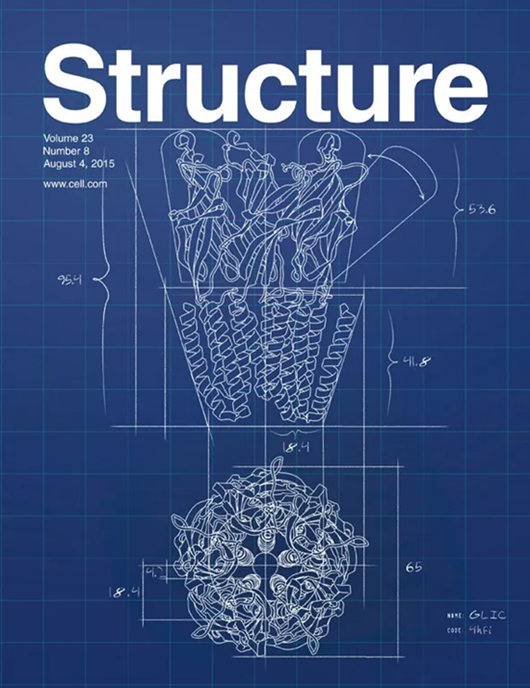分段负义 RNA 病毒的 RNP 结构透视
IF 4.4
2区 生物学
Q2 BIOCHEMISTRY & MOLECULAR BIOLOGY
引用次数: 0
摘要
分段负义单链 RNA 病毒(如流感病毒和布尼亚病毒)的基因组被病毒核蛋白(NP)包覆,形成核糖核蛋白(RNP)。在本期的《结构》杂志上,Dick 等人1 通过解析 Thogoto 病毒 NP 和 RNP 的结构,拓展了我们对这些病毒的 RNP 的认识。本文章由计算机程序翻译,如有差异,请以英文原文为准。
Insights into the structure of RNPs from segmented negative-sense RNA viruses
The genome of segmented negative-sense single-stranded RNA viruses, such as influenza virus and bunyaviruses, is coated by viral nucleoproteins (NPs), forming a ribonucleoprotein (RNP). In this issue of Structure, Dick et al.1 expand our knowledge on the RNPs of these viruses by solving the structures of Thogoto virus NP and RNP.
求助全文
通过发布文献求助,成功后即可免费获取论文全文。
去求助
来源期刊

Structure
生物-生化与分子生物学
CiteScore
8.90
自引率
1.80%
发文量
155
审稿时长
3-8 weeks
期刊介绍:
Structure aims to publish papers of exceptional interest in the field of structural biology. The journal strives to be essential reading for structural biologists, as well as biologists and biochemists that are interested in macromolecular structure and function. Structure strongly encourages the submission of manuscripts that present structural and molecular insights into biological function and mechanism. Other reports that address fundamental questions in structural biology, such as structure-based examinations of protein evolution, folding, and/or design, will also be considered. We will consider the application of any method, experimental or computational, at high or low resolution, to conduct structural investigations, as long as the method is appropriate for the biological, functional, and mechanistic question(s) being addressed. Likewise, reports describing single-molecule analysis of biological mechanisms are welcome.
In general, the editors encourage submission of experimental structural studies that are enriched by an analysis of structure-activity relationships and will not consider studies that solely report structural information unless the structure or analysis is of exceptional and broad interest. Studies reporting only homology models, de novo models, or molecular dynamics simulations are also discouraged unless the models are informed by or validated by novel experimental data; rationalization of a large body of existing experimental evidence and making testable predictions based on a model or simulation is often not considered sufficient.
 求助内容:
求助内容: 应助结果提醒方式:
应助结果提醒方式:


